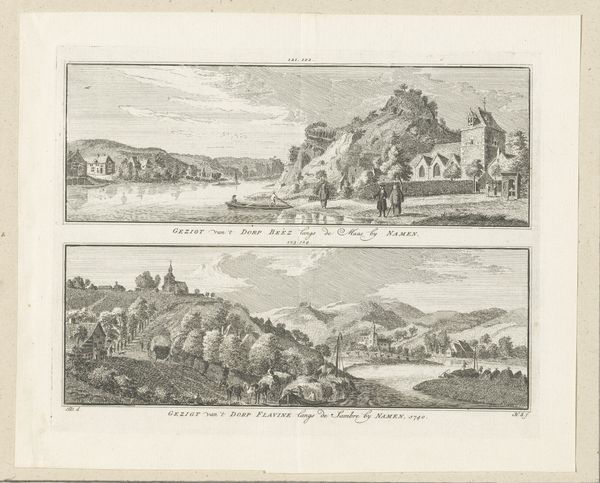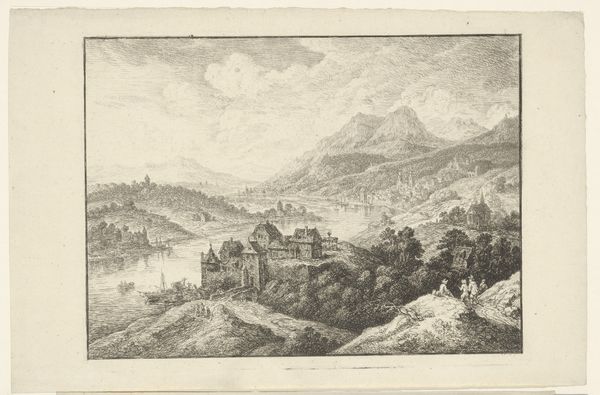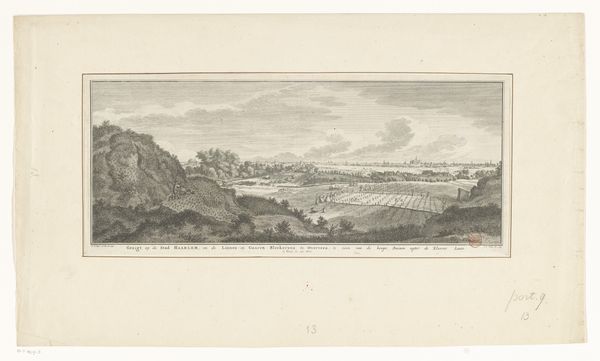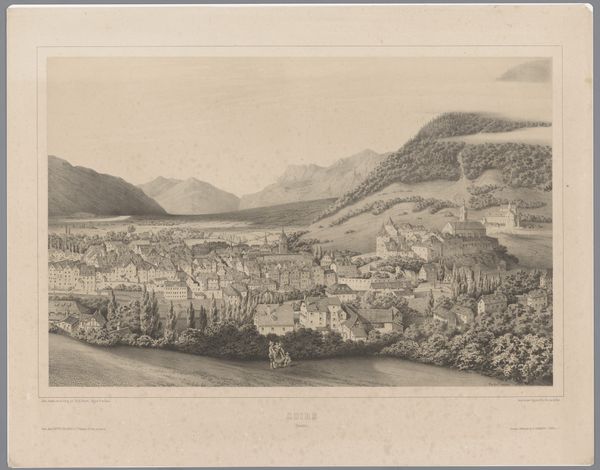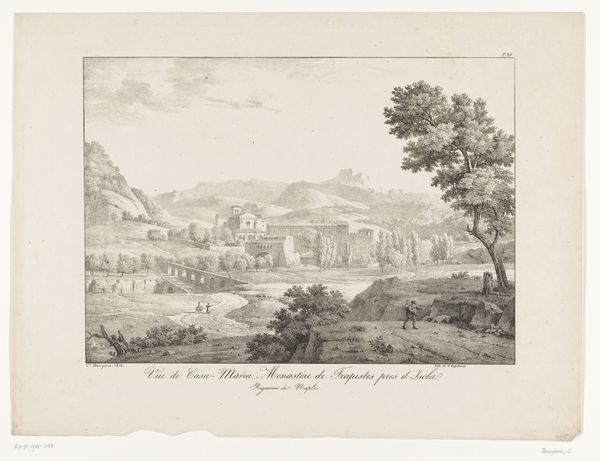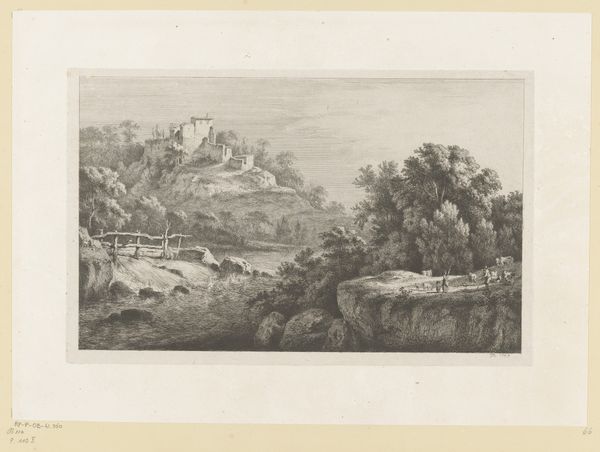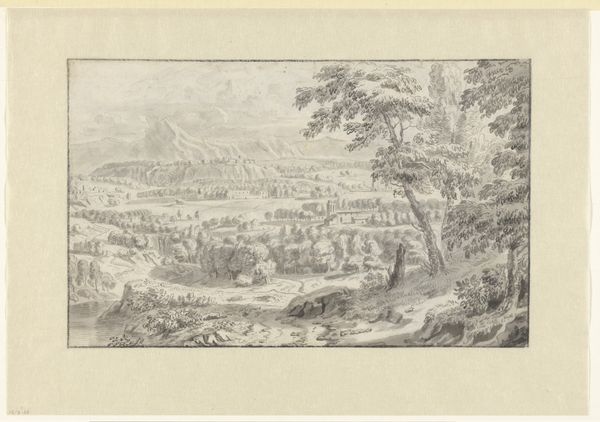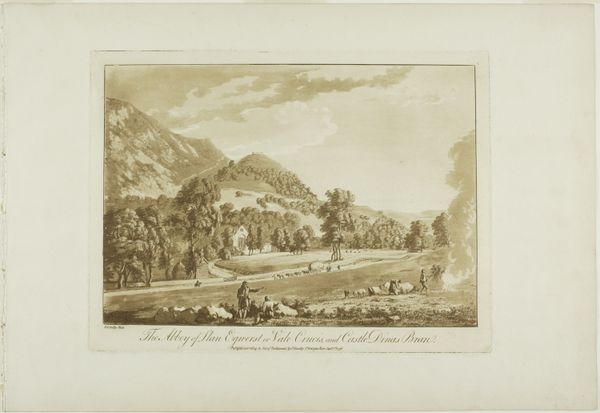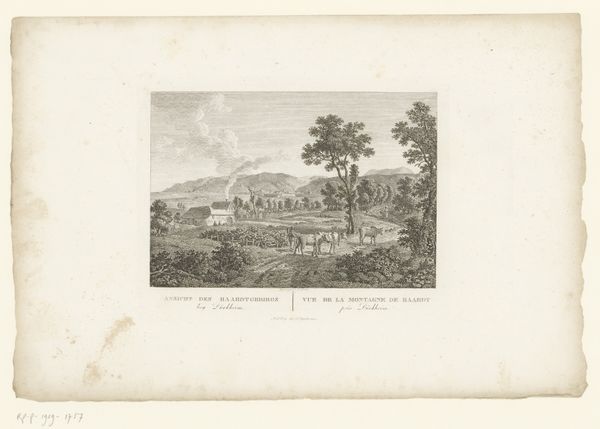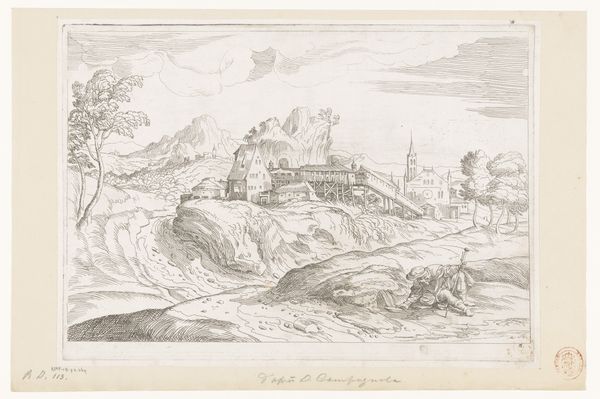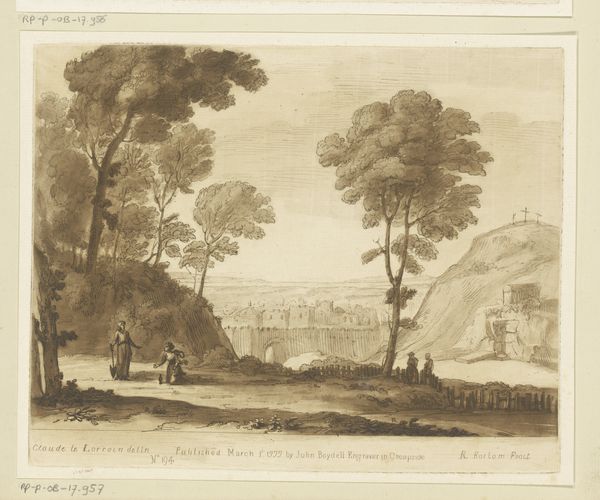
Dimensions: height 113 mm, width 176 mm
Copyright: Rijks Museum: Open Domain
Curator: Looking at this detailed engraving from the Rijksmuseum collection, "Gezicht op Eisenach," created sometime between 1850 and 1899 by an anonymous artist, I’m immediately drawn to its atmospheric rendering of a distant, almost mythical, town nestled among hills. What is your first impression? Editor: It feels almost like a stage set. There's a clear foreground, a middle ground with the town, and then the dramatic backdrop of the hills. It’s a picturesque scene, neatly composed, perhaps to project an idealized image of provincial German life. Curator: I agree. The engraving certainly romanticizes the scene, evoking the sublime through the careful placement of natural and man-made elements. Note how the hilltop castle looms over the town; it's not merely a geographical feature, but a loaded symbol of power and history. Wartburg Castle specifically— Editor: Which famously served as a refuge for Martin Luther. Is the castle visually downplayed to imply the diminishing relevance of church power structures relative to local communities? Curator: An intriguing idea. What else catches your eye? Editor: The delicate shading and details in the trees suggest a Romantic sensibility, an embrace of nature's power but also, I wonder, an encoding of specific meanings through nature's bounty. Notice the horse-drawn carts; they remind me of the ways such engravings played a crucial role in shaping and disseminating visions of places and ways of life. How do those images speak through time? Curator: Precisely. The engraving serves as a tangible link to the Romantic era's preoccupation with identity and place. Through it we see a constructed view meant to inspire awe and patriotism, using icons like castles or mountains—and their connotations through religious associations and personal interpretation, I imagine—to reinforce the notion of belonging. Editor: It makes one wonder how prints like these reinforced class distinctions through consumption, enabling distant places to seem proximate for those who would perhaps never visit. Curator: These accessible images served not just aesthetic but social purposes; and yes, one of the key reasons it is a valuable tool to the study of this time period. A powerful reminder of art’s capacity to build a sense of belonging, shaping perception across boundaries, social groups and levels of lived experience. Editor: It also seems worth considering its broader use: to consider how it presents national identity via art. An efficient way to reinforce nationalism at the time, perhaps? Curator: An important reminder of the enduring influence of images to unite and to differentiate societies throughout history, especially using memory or shared national imagery like a famous Wartburg. Editor: Well, I feel like this engraving invites us to ponder not just a scenic view, but the powerful and shaping forces that underpin the images of familiar visual representation in any culture.
Comments
No comments
Be the first to comment and join the conversation on the ultimate creative platform.
